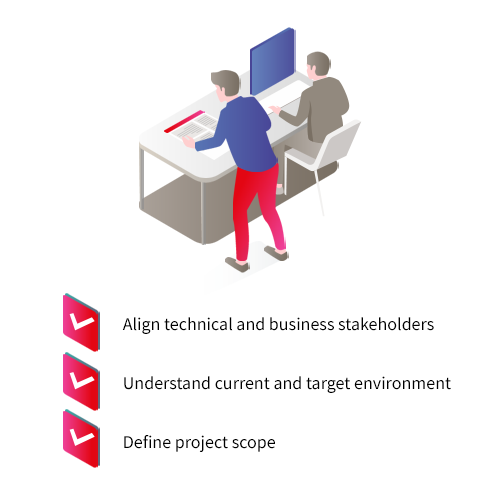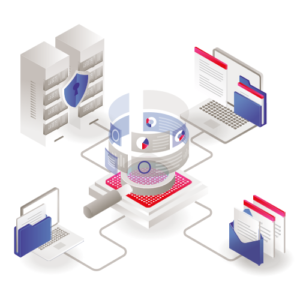Customers underestimate the complexity of the migration and view it as simply “copying files from A to B” (rather than seeing the potential of the migration and rethinking the way they manage content towards an improved UX)
MEDIA
HELP
A content migration project is often more complex than it initially seems, and that is in the nature of things: There are so many key people and users involved in a centrally used document management system that at least one person in each department must or should take on a role. More or less.
You know what I am getting at. In our experience, this example never actually occurs in a document migration project. Deviations do happen and will most likely lead to one of the following pitfalls.
A common mistake, and not only in the migration context, is to underestimate the complexity of a project. You must have a thorough understanding of the business processes, the capabilities of the content management system, and preferably the technical details.

The solution here is to bring all stakeholders to the same table and conduct an in-depth analysis of all existing key points.
For this blogpost, we asked our most experienced migration experts about their learnings regarding the estimation of project complexity. Here are the most frequently mentioned misconceptions:
This is a broad area, but it is vital to set expectations at a realistic level from the very beginning. These include expectations regarding the new content system, the process of migration, metadata conversion, and the migration strategy.
In order to maintain realistic expectations, continuous communication is key. Introduce the appropriate platforms early, highlight any limitations or issues up front, and report on as many steps in the migration process as possible.
What our experts say:
Data is the bread and butter of our business, and that’s exactly the reason why we have document management systems. However, the best DMS is only as good as its data quality. Usually, the quality of (meta) data deteriorates over time, but in everyday work this is often not visible and does not pose a problem. It becomes very visible, though, during a data migration. Especially if the source is a file system or similar flexible system, the metadata structure does not follow any scheme – or each department has its own.

To tackle this pitfall, a substantial pre-analysis of the data quality must be performed.
Many times, this step gets overlooked or has already been done, but not thoroughly enough. Therefore, it is imperative to re-examine the results and make appropriate decisions. The good thing is, data quality issues can be overcome more or less easily with the right tools and techniques – provided the analyses are well done and the subsequent procedures are well planned, of course.
As business processes as well as transformation rules and metadata mapping depend on good data, this is overly important.
Lessons learned from our experts:
Keep posted, the second part will be coming soon!
It will give you practical insights to troubleshoot metadata mapping, IT, privacy and security, and scheduling challenges.

 Migrating to Generis’ CARA Platform: Insights from a specialist
Migrating to Generis’ CARA Platform: Insights from a specialist